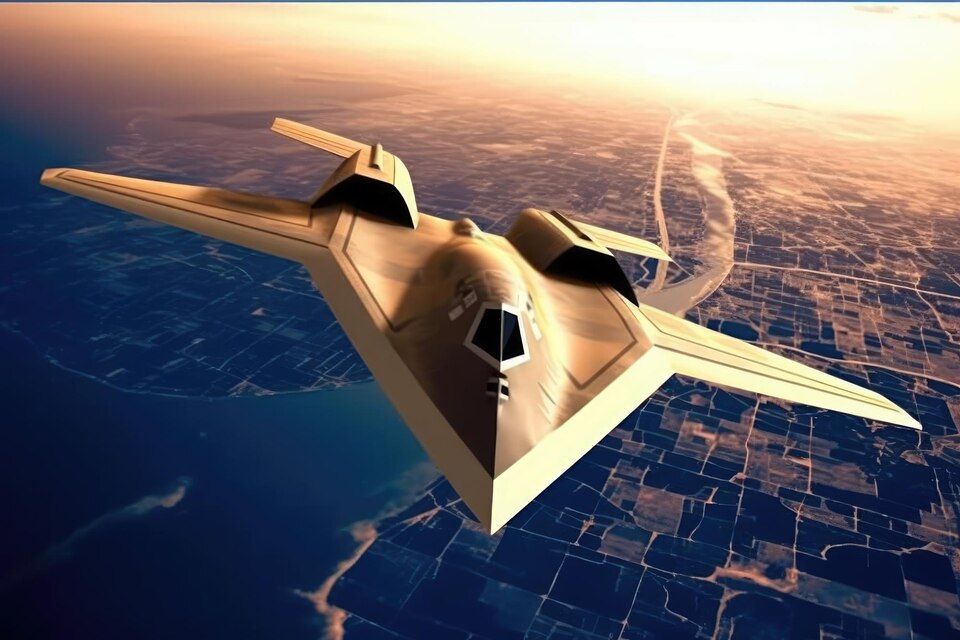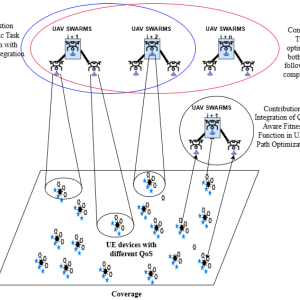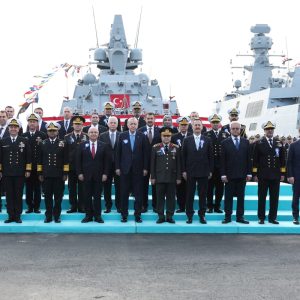In the dynamic realm of air force technology, the evolution of sixth-generation aircraft is poised to redefine the landscape of military aviation. These cutting-edge platforms are not only pushing the boundaries of engineering but also reshaping strategic considerations and the very nature of air dominance.

Unveiling the Next Frontier: The Era of Sixth-Generation Aircraft
Defining the Sixth-Generation Aircraft
As the successor to fifth-generation fighters, sixth-generation aircraft represent the pinnacle of aerospace engineering. Exploring Sixth-Generation Aircraft is still an unknown. But these advanced platforms introduce a host of innovative features, including enhanced stealth capabilities, integrated sensor networks, augmented artificial intelligence, and unparalleled manoeuvrability. Each facet of their design is meticulously crafted to outperform their predecessors and adapt to the evolving challenges of modern warfare.
Exploring Sixth-Generation Aircraft
The advent of sixth-generation aircraft heralds a revolution in air warfare. With their advanced sensor fusion capabilities and real-time data analysis, these aircraft can seamlessly integrate information from various sources, providing pilots with a comprehensive view of the battlespace. This heightened situational awareness empowers decision-makers to make split-second choices, ensuring a decisive edge in fast-paced, high-stakes scenarios.
The Pursuit of Air Dominance: A Global Race
The Quest for Air Dominance
In an era marked by geopolitical uncertainties, the race for air dominance has intensified. Nations across the globe are investing heavily in the development of sixth-generation aircraft to secure their airspace and maintain a strategic advantage. The capabilities of these aircraft extend beyond dogfights, encompassing long-range strike capabilities, electronic warfare systems, and the ability to counter emerging aerial threats, including drones and hypersonic missiles.
Strategic Implications
The emergence of sixth-generation aircraft has far-reaching strategic implications. These platforms can operate in contested environments, enabling nations to project power across vast distances and deter potential adversaries. The agility, precision, and interoperability of these aircraft facilitate joint operations, allowing air forces to seamlessly collaborate with ground and naval forces in complex multi-domain scenarios.
The Aerospace Industry’s Technological Odyssey
Industry Innovations and Collaborations
The development of sixth-generation aircraft is a collaborative effort that spans the aerospace industry. Aircraft manufacturers, defence contractors, research institutions, and government agencies converge to leverage their collective expertise. This spirit of collaboration drives innovation, resulting in breakthroughs in materials science, propulsion systems, stealth technology, and avionics.
Balancing Innovation and Affordability
While innovation is paramount, the aerospace industry also faces the challenge of balancing technological advancements with affordability. The complexity of sixth-generation aircraft demands careful consideration of cost-effective solutions that ensure the accessibility of these cutting-edge platforms to a wider range of nations.
Source
FAQs (Frequently Asked Questions)
Q1: What are sixth-generation aircraft?
A1: Sixth-generation aircraft are the latest and most advanced generation of military aircraft, equipped with features like enhanced stealth, integrated sensors, artificial intelligence, and superior manoeuvrability.
Q2: How do sixth-generation aircraft redefine air warfare?
A2: Sixth-generation aircraft revolutionize air warfare by offering advanced sensor fusion, real-time data analysis, and unparalleled situational awareness, enabling faster and more informed decision-making.
Q3: Why is air dominance important?
A3: Air dominance ensures control of the skies, granting the ability to project power, deter adversaries, and effectively respond to emerging threats.
Q4: How do sixth-generation aircraft impact joint operations?
A4: Sixth-generation aircraft’s agility and interoperability enable seamless collaboration between air, ground, and naval forces in complex multi-domain operations.
Q5: What is the role of collaboration in sixth-generation aircraft development?
A5: Collaboration among aircraft manufacturers, defence contractors, research institutions, and government agencies drives innovation, leading to breakthroughs in aerospace technology.
In conclusion, the evolution of sixth-generation aircraft stands as a testament to the relentless pursuit of technological excellence in the field of Air Force technology. As nations invest in these advanced platforms, the future of air warfare is being shaped by innovations in stealth, sensors, AI, and interoperability. The race for air dominance is intensifying, and the aerospace industry’s collaborative efforts are propelling the world into a new era of military aviation capabilities.










